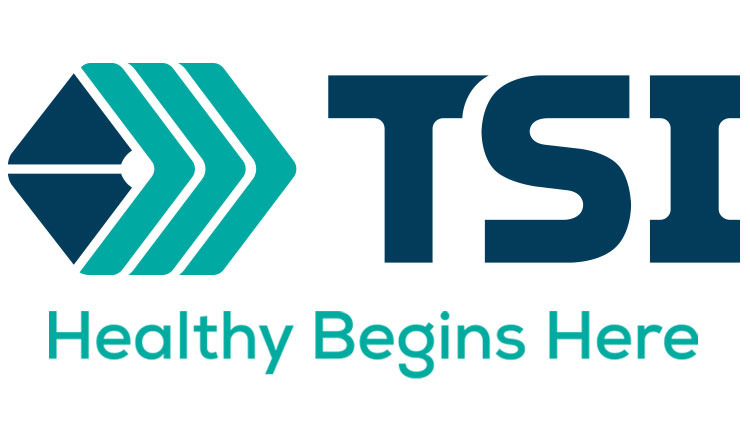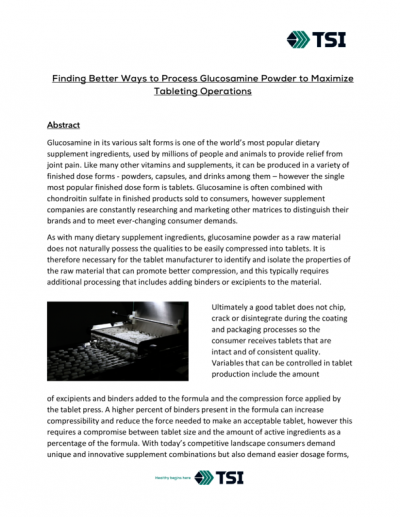Promotional Features
How Sustainable Glucosamine Fulfills New Consumer Demands
Asian consumers are exhibiting a spirited awakening for sustainable and natural health and well-being, ushering in a perfect time to formulate products that not only meet their health support requirements but also reflect their values of environmental stewardship and protection of earth’s resources, including its people. The trend of plant-based foods and beverages continues to strengthen and resonate with consumers for myriad reasons, including religious and/or cultural beliefs about meat consumption, and the desire to consume more nutrient-dense natural foods for promoting health and well-being.
Findings from a 2020 market research study by GlobeScan from data collected in 27 countries with approximately 27,000 participants illustrate a strengthening willingness of people worldwide to be proactive in making healthier and more sustainable changes. According to the market intelligence firm, this trend was strong in Asia. A survey of approximately 9,000 participants in Hong Kong, China, India, Indonesia, Japan, Singapore, South Korea, Thailand, and Vietnam showed that 81% of Asian consumers are taking steps to improve their health, and 75% stated they are actively taking measures to significantly reduce their environmental footprint.
One of the most significant areas of health Asian consumers are focused on is maintaining fluid mobility, that is, ensuring that their joints remain highly functioning and preserving critical cartilage structure. As humans progress in age, joint deterioration naturally occurs through years of use, and osteoarthritis (OA) tends to develop in knees, which take the brunt of weight and force.
According to the World Health Organization, OA is one of the top 10 most disabling diseases in developed countries. Beyond the pain and reduced mobility, OA can indirectly cause weight gain and depression from loss of physical activity.
Glucosamine Sustains Positive Reputation
There are many ingredients in the joint health space but very few are materials that the body already recognizes. Unlike herbs such as Boswellia, glucosamine is naturally produced in the body although production subsides with age. Therefore, the idea of replenishing age-related diminishing levels is not only sound but borne out in hundreds of studies. For example, supplementing with glucosamine:
- improved knee flexion and extension in athletes1
- Significantly decreased CTX-II levels (CTX-II is a biomarker of collagen and cartilage degradation)2
- Decreased the risk of developing knee osteoarthritis (OA)3
- Reduced type II collagen degradation while maintaining synthesis4
Additionally, glucosamine is favorably recognized by consumers around the globe. According to data from the Trust Transparency Center, a majority of supplement users have either experienced benefits from glucosamine or believe in its efficacy in protecting their joints. Supplement brands in the joint health space continue to develop new glucosamine-based products.
Why Conventional Glucosamine Doesn’t Hold Up
Common glucosamine products feature materials derived from chitin, a main compound in the shells of marine animals. The production of glucosamine from shellfish is abrasive on the environment, and the chitin is susceptible to supply and demand issues.
To produce 1 metric tonne of glucosamine HCI, the conventional supplier would need 2,000 kg of chitin, 5,000 kg of sodium hydroxide (also known as lye), and 17,000 kg of 30% HCI. During this process of obtaining the chitin from the shellfish, up to 460 metric tonnes of wastewater is generated. It is energy intensive, inefficient, harmful to the planet and most critically, will not be sustainable. And time will soon be running out. Manufacturing glucosamine from shellfish creates 5.5 times its weight in solid waste and 455 MT of wastewater.
The GlucosaGreen Advantage
GlucosaGreen is a unique glucosamine that is fully as effective as conventional glucosamine but provides the bonus of fulfilling consumers’ sustainable demands and being suitable for anyone who prefers to maintain plant-based diets. The output is the exact same material as with shellfish derived glucosamine.
GlucosaGreen is manufactured through a process that uses a unique fermentation technology on non-GMO corn to produce glucosamine bioequivalent to shellfish glucosamine. And this process is much more suitable to the well-being of the environment. The fermentation process to make GlucosaGreen that replaces the extraction of chitin from shellfish reduces water use by 99.6 per cent and the solid waste production by 98 per cent. Further, hydrochloric acid input is reduced by nearly 90% when making GlucosaGreen compared to shellfish glucosamine.
Conclusion
As a clean source of glucosamine, GlucosaGreen ticks the most important consumer boxes: it is proven by research to be effective for joint support, non-GMO, non-allergenic, safe, vegan/vegetarian friendly, fits plant-based/flexitarian lifestyles, suitable for religious dietary restrictions, is environmentally friendly and sustainable.
With 70% of their European and North American counterparts willing to pay higher prices for a product that is sustainably sourced, according to Trust Transparency Center ITC Insights, Asian consumers will likely be moved to adopt GlucosaGreen as their go-to supplement for joint support and mobility enhancement.
-----
References
- Ostojic et al. Glucosamine administration in athletes: effects on recovery of acute knee injury. Res Sports Med 15:113-124, 2007.
- Yoshimura et al. Evaluation of the effect of glucosamine administration on biomarkers for cartilage and bone metabolism in soccer players. Int J Molec Med 24:487-494, 2009.
- Runhaar et al. The role of diet and exercise and of glucosamine sulfate in the prevention of knee osteoarthritis: Further results from the Prevention of knee Osteoarthritis in Overweight Females (PROOF) study Semin Arthritis Rheum 45: S42-S48, 2016
- Tomonaga et al. Evaluation of the effect of N‑acetyl‑glucosamine administration on biomarkers for cartilage metabolism in healthy individuals without symptoms of arthritis: A randomized double‑blind placebo‑controlled clinical study. Exp Ther Med 12: 1481-1489, 2016:





